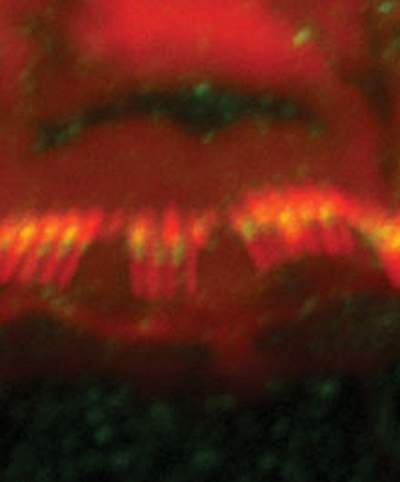You are here
October 31, 2012
Gene Tied to Hearing Loss and Usher Syndrome

Scientists discovered mutations in a gene that lead to hearing loss and also contribute to Usher syndrome. The finding adds to a growing body of knowledge about the biological pathways involved in these disorders.
Usher syndrome is the most common condition that affects both hearing and vision. There are 3 clinical types of Usher syndrome. In the United States, types 1 and 2 are the most prevalent.
Researchers had previously linked a region on chromosome 15 to type 1 Usher syndrome in 2 families. The region was also tied to hearing impairment not linked with other symptoms (nonsyndromic deafness) in 5 large Pakistani families. The researchers later found 52 more Pakistani families with hearing impairment linked to the genetic region.
In their new report, the team worked to pinpoint the specific mutations responsible. The study was led by Drs. Zubair Ahmed and Saima Riazuddin of the University of Cincinnati and Dr. Thomas B. Friedman of NIH's National Institute on Deafness and Other Communication Disorders (NIDCD). The results appeared in the November 2012 issue of Nature Genetics.
The researchers found that the mutations responsible were in a gene called CIB2. These mutations are among the major causes of hearing impairment in the Pakistani population. The scientists also linked a mutation in the gene with deafness in a Turkish family.
CIB2 belongs to a family of proteins that bind calcium and integrins, a type of protein that is thought to regulate calcium concentration in specific places inside the cell. Experiments revealed that the newly identified mutations affect the way CIB2 binds calcium.
The researchers hypothesized that CIB2 plays a role in mechanotransduction—the process by which sound waves are transformed into the electrical signals that the brain recognizes as sound. CIB2 joins a growing list of genes associated with Usher syndrome. The proteins these genes produce are thought to interact to influence the structure and function of stereocilia, bristly structures that sit atop sensory “hair” cells in the inner ear. Most scientists believe that as stereocilia move, microscopic tethers between them open ion channels, the tiny holes in the cell that let electrically charged molecules (ions) pass in and out. The ions rushing inside begin an electrical signal that travels to the brain. CIB2, the researchers reasoned, may play a role in how calcium ions modulate these signals in hair cells.
Experiments in mice revealed CIB2 in the stereocilia of inner ear hair cells. Consistent with the protein playing a role in Usher syndrome, CIB2 also showed up in retinal photoreceptor cells, which convert light into electrical signals in the eye. Experiments in zebrafish and fruit flies found that CIB2 is essential for the function and proper development of both hair cells and retinal photoreceptor cells.
Taken together, these results suggest that CIB2 helps regulate calcium in the mechanotransduction process that enables us to hear. “With this knowledge, we are one step closer to understanding the mechanism of mechano-electrical transduction,” Ahmed says.
—by Harrison Wein, Ph.D.
Related Links
- Key Hearing Proteins Identified
- Proteins Pair to Form Crucial Hearing Structure
- A Protein That Helps Turn Sound into Sense
- Hearing, Ear Infections, and Deafness
- Usher Syndrome
References: >Nat Genet. 2012 Sep 30. doi: 10.1038/ng.2426. [Epub ahead of print]. PMID:23023331.
